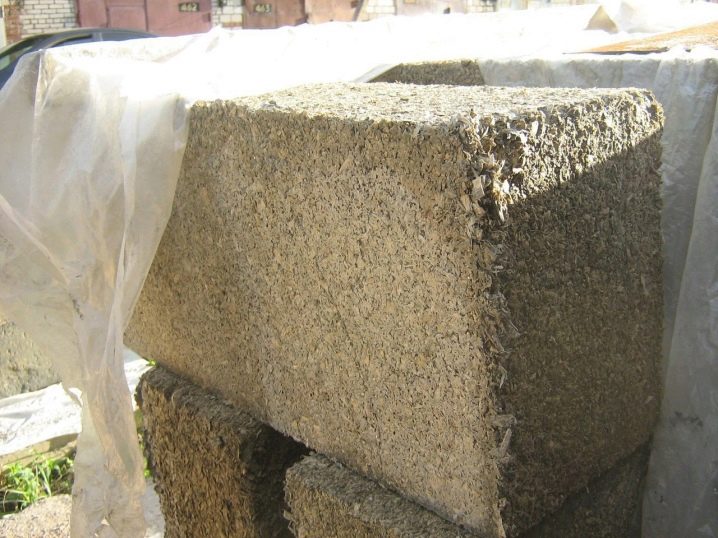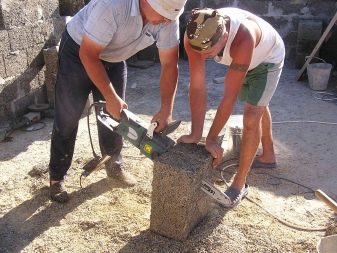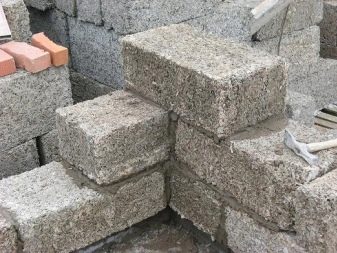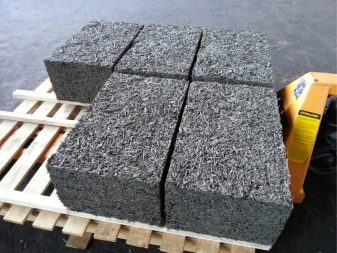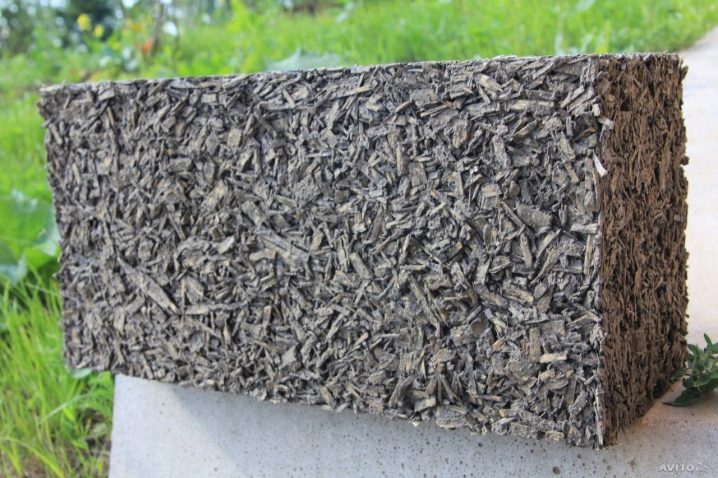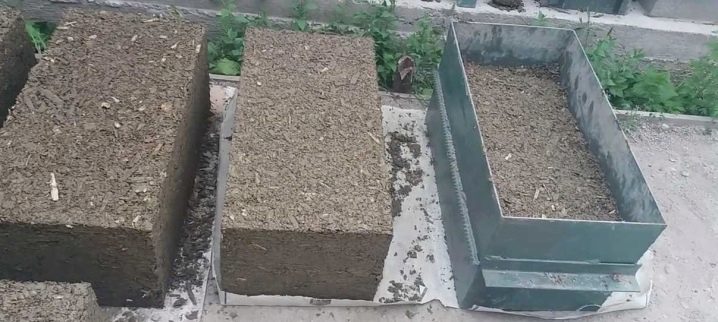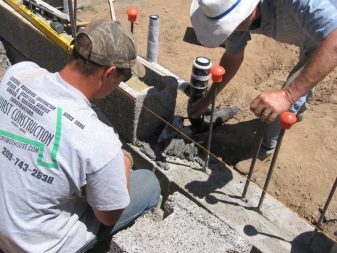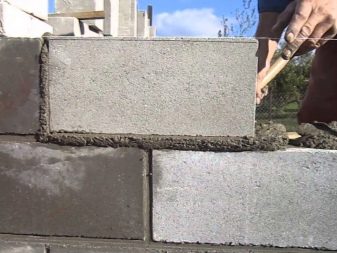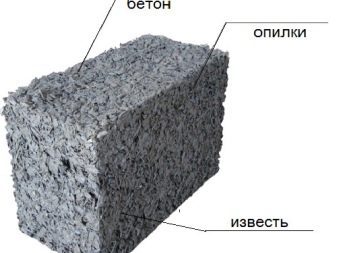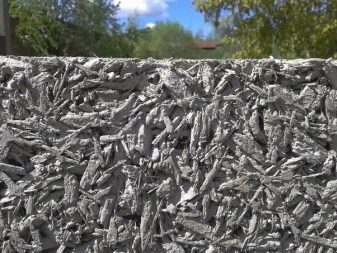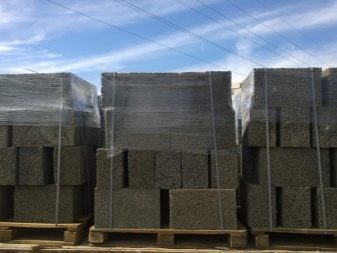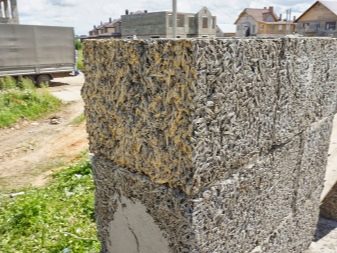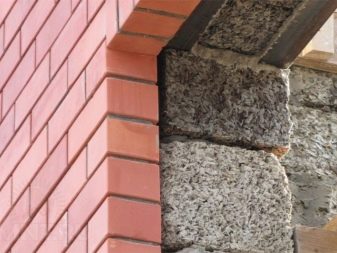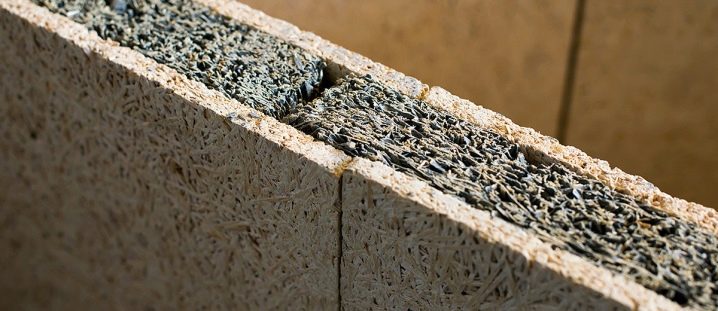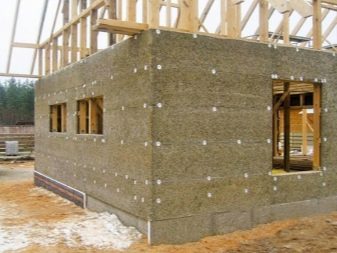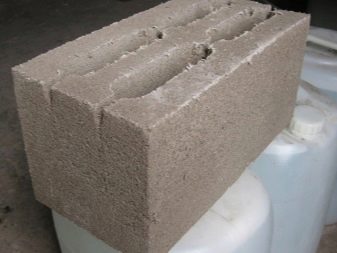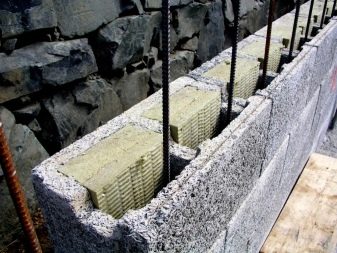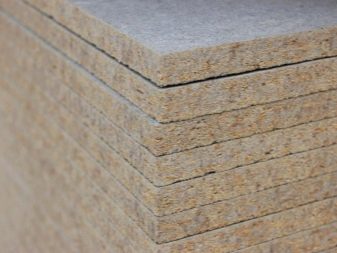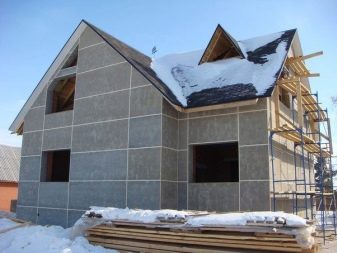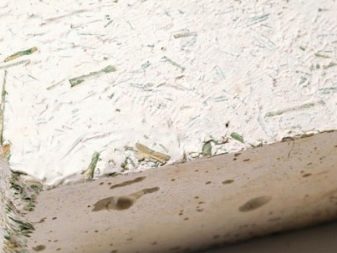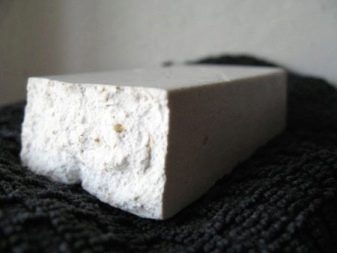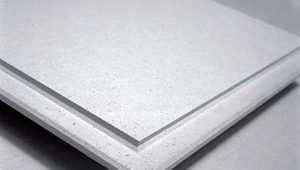Cement and sawdust blocks: pros and cons
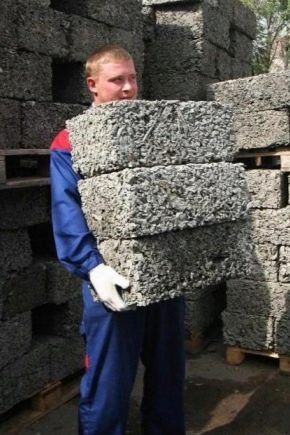
Cement-sawdust materials are a practical alternative for foam and aerated concrete, as well as brick, wood and other materials in the construction of low-rise houses and baths. The material has good properties and pleasantly pleased with availability.
In addition, it can not only be purchased, but also done with your own hands at home without purchasing expensive equipment, and if there is a main component - sawdust or wood chips, this makes wood-cement products even more profitable.
Advantages and disadvantages
Arbolite blocks - the material is not new, but until recently it was not widespread, which is more than surprising, given its excellent performance characteristics.
Positive features include the following properties:
- Excellent heat insulation performance. Houses from opilkobetona, as a thermos, keep heat in the winter, and a cool - in the summer. The use of wood concrete eliminates the need for thermal insulation of walls, which, accordingly, saves money for construction.
- Absolute naturalness. All components of building materials are of natural origin. They are not toxic and do not emit microparticles that are hazardous to health, provoking allergies and diseases.
- Strength. In the segment of porous materials, arbolit has good structural strength, which makes it possible to use it as a material for load-bearing structures of buildings not exceeding the height of three floors.
- Flame retardancy. In the manufacture of concrete-chip blocks used synthetic additives that provide good fire resistance of the material. It is able to withstand temperatures of about 1200 ° C for 2 hours without ignition.
- High vapor permeability. The porous structure provides free penetration of fresh air into the house, which creates a comfortable, unforgiving atmosphere.In addition, vapor permeability allows evaporation of moisture trapped in the wall, thereby preventing its accumulation and dampness of the walls.
- Resistance to temperature changes. The material is resistant to freezing and thawing cycles, does not collapse when the seasons change when the frozen wall begins to heat up.
- Acceptable price. Arbolite blocks are somewhat more expensive than aerated concrete, but they can be used as a material for supporting structures of low-rise buildings and not resorting to brick and similar materials, which reduces the cost of construction as a whole.
- High noise isolation. The porosity of the material provides a significant absorption of sound, reducing the level of both incoming and outgoing noise.
- Easy processing. The material is easily cut, drilled and other processing methods without cracking and chipping, preserving the structural integrity under mechanical action.
- Recycling. The bulk of the mass of wood-cement materials - chips or chips, which are waste wood industry. Even in the absence of its own source of raw materials, it can be purchased at a low price andapply to create building materials, which will reduce its already low price.
- Ease of operation. The blocks are quite voluminous and light at the same time, the walls are created quickly and without significant expenditure of physical strength.
- Durability. Provided that arbolit blocks are protected from moisture ingress, they will serve for many decades without destruction from drying out, corrosion and other sluggish processes.
In addition to the positive aspects, arbolitovy blocks have some drawbacks:
- Long production. After pouring into the mold, the material should harden within three months until it is used in construction.
- Weak moisture resistance, high moisture absorption. Most wood-cement blocks are afraid of moisture and at the same time actively absorb it. Protection against water is the main task for those who want to use cement-particle materials in construction.
- The limitations of wood as a raw material.
Application technology
In the construction of the outer wall of the building using arbolita, to prevent the penetration of moisture, settles down the base of a brick or concrete with a height of at least half a meter from the blind area.For the same purpose, the overhang of the eaves for the front walls should be at least half a meter with the obligatory installation of a system for the discharge of storm and melt water.
- The seams between the blocks should be 10-15 mm thick.
- Arbolite blocks are often used for laying only the inner layer for the purpose of insulation.
- When using cement-shaving blocks as a material for door and window lintels, reinforcement is required.
- Density and class of blocks by brand:
- M5 - 400-500 kg / cu. m, V0.35;
- M10 - 450-500 kg / cu. m, B0.75;
- M15 - 500 kg / cu. m, B1;
- M25 - 500-700 kg / cu. m, B2;
- M50 - 700-800 kg / cu. m, B3.5.
Arbolite blocks are eaten by rodents, so you need to reinforce the wall with a grid in the area of accessibility of pests or combine the clutch with other material.
Composition
The main component of building material is sand, as well as cement and chips (chips). Cement affects the strength, workability and some other performance characteristics. The brand of cement used to create the blocks should be no lower than M400.
The increased content of sawdust enhances the noise-absorbing and heat-insulating indicators of wood concrete blocks. Chips should be thoroughly dried before use..
With the growth of the share of sand, the strength increases, but the insulation of the material decreases. Also in the manufacture of used chemical additives that enhance various qualities.
For example, a component that increases the fire resistance of the material is almost always applied. In addition, a substance that repels rodents and other pests can be used.
Types of wood-cement materials
Depending on the wood filler added, wood-cement materials of various sizes and structure are obtained. The result is also influenced by the type of glue.
Among the many options are the following widely used types:
- arbolit;
- fibrolite;
- opilkobeton;
- cement strand board;
- xylolite.
Arbolit
It is a material with a high content of wood chips, water, an astringent component - mainly Portland cement - and chemical additives for various purposes. Used for manufacturing waste wood industry from hardwood and softwood. An alternative can be flax or hemp fire, straw chop, cotton stalk and similar raw materials.
It is divided into two main classes: construction and heat insulation. In the second, the percentage of the wood component is increased, but the strength is reduced.
Arbolit is used to create products for any purpose:
- blocks for the distillation of external and internal walls;
- floor plates;
- floors and coverings;
- large wall panels.
Fibrolite
This building material is produced in the form of slabs on the basis of chip waste and a binder. According to the parameters, the raw material for wood filler is chips with a length of 35 cm or more and a width of 5 to 10 cm, ground into wool.
At the next stage, the wood filler is mineralized with potassium chloride, it is moistened with water in a certain proportion and kneaded with cement mortar, and then pressed into plates under a pressure of 0.4 MPa. Then there is a heat treatment and drying of finished products.
The material is of two types: insulating and insulating and structural.
The characteristic properties of this material are:
- strong roughness - determines its high adhesive properties with finishing materials;
- fire safety - the material does not burn with an open flame;
- high thermal insulation performance - thermal conductivity is only 0.08-0.1 W / sq. m;
- ease of processing - cutting, drilling, hammering dowels and nails is carried out without any problems;
- moisture absorption in the range of 35 to 45%;
- vulnerable to fungal mold at humidity above 35%.
Opilkobeton
This material is similar to arbolit, but it does not have such strict criteria for wood filler. The material is so called due to its composition - it consists of sand, concrete and sawdust of different fractions. In addition, this material may contain lime and clay, and the percentage of sand may exceed that of wood concrete. Thus, at the same density, the strength of opilkobeton is less.
As a result, the weight of the supporting structure of opilcobeton will be greater than that of wood concrete with the same structural strength class - M. The insulating properties of opilco concrete are also inferior to wood concrete.
The main advantage is the price of the material - this is also indicated by consumer reviews, which, in the absence of special requirements, makes its use more profitable.
In addition, the strength of opilkobeton is inferior to wood concrete, but considerably exceeds the strength of other porous block materials of non-woody origin.
Cement particle boards
This material belongs to the widespread type, is made from wood-particle mixture, kneaded on water, cement and mineral additives, followed by dosing, molding, pressing and heat treatment.
Characteristic features of the material include:
- frost resistance;
- incombustibility;
- biological inertness.
This material is used in prefabricated houses. A scope - front and internal works.
The uniqueness of the rest of the wood chip materials lies in the high moisture resistance of the plates. The disadvantages of this material include a relatively large weight - 1.4 t / cu. m, which makes working with them above the first floor. The second drawback is a weak elasticity, due to which, with a slight bend of the plate, it breaks. On the other hand, the plates are resistant to longitudinal deformation and are used to strengthen the frame.
Xylolite
It refers to sandy materials based on magnesia binder and wood waste: sawdust and flour.The composition contains finely dispersed minerals: talc, marble flour and other ingredients, as well as alkaline pigments. In the production process, a high pressure (10 MPa) and a temperature of about 90 ° C are used, which provides special strength during solidification.
Such plates are used mainly for the manufacture of floors.
Characteristic features of xylolite include:
- high compressive strength depending on the specific type (from 5 to 50 MPa);
- excellent resistance to shock loads - the material does not break, but kneads;
- high noise and heat insulation properties;
- incombustible;
- frost-resistant;
- moisture resistant.
How to make blocks of cement and sawdust with your own hands, see the next video.
